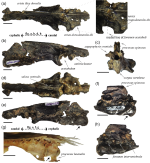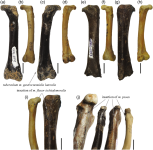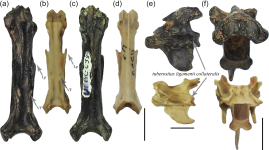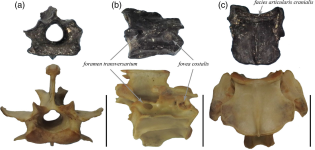Fred Ruhe
Well-known member

Edson Guilherme., Carlos D'Apolito, Fellipe Muniz, Silvia Oliveira Lomba, Leonardo Aldrin, Annie Schmaltz Hsiou , 2023
New fossil anhingids from the upper Acre River (Late Miocene of southwestern Amazon)
The Anatomical Record
First published: 01 October 2023
https://doi.org/10.1002/ar.25329
Abstract: https://anatomypubs.onlinelibrary.wiley.com/doi/10.1002/ar.25329
Four extant species of anhingids are found worldwide, all belonging to a single genus (Anhinga). However, the fossil record reveals a much greater diversity of this group in the past. The oldest known anhingids date back to the upper Oligocene period in Australia, but during the Miocene epoch in South America, they achieved their most remarkable diversity. This study describes newly discovered anhingid fossils from the Late Miocene period in South America. These fossils were extracted from the Acre conglomerate member, part of the Upper Miocene deposits in the southwestern Amazon region. The described fossils consist of two fragments of pelvic girdles, two femora, and two vertebrae belonging to a giant anhingid (Macranhinga sp.), as well as a vertebra from Anhinga minuta, the smallest of all darters. The examination of these fossils suggests the presence of potentially three distinct anhingid taxa within the same locality. The environment in which the conglomerate deposits were formed was ecologically complex. It is likely that these three species coexisted within the same ecosystem but avoided direct competition for food and reproductive sites by not fully exploiting their fundamental niche.
Enjoy,
Fred
New fossil anhingids from the upper Acre River (Late Miocene of southwestern Amazon)
The Anatomical Record
First published: 01 October 2023
https://doi.org/10.1002/ar.25329
Abstract: https://anatomypubs.onlinelibrary.wiley.com/doi/10.1002/ar.25329
Four extant species of anhingids are found worldwide, all belonging to a single genus (Anhinga). However, the fossil record reveals a much greater diversity of this group in the past. The oldest known anhingids date back to the upper Oligocene period in Australia, but during the Miocene epoch in South America, they achieved their most remarkable diversity. This study describes newly discovered anhingid fossils from the Late Miocene period in South America. These fossils were extracted from the Acre conglomerate member, part of the Upper Miocene deposits in the southwestern Amazon region. The described fossils consist of two fragments of pelvic girdles, two femora, and two vertebrae belonging to a giant anhingid (Macranhinga sp.), as well as a vertebra from Anhinga minuta, the smallest of all darters. The examination of these fossils suggests the presence of potentially three distinct anhingid taxa within the same locality. The environment in which the conglomerate deposits were formed was ecologically complex. It is likely that these three species coexisted within the same ecosystem but avoided direct competition for food and reproductive sites by not fully exploiting their fundamental niche.
Enjoy,
Fred
Last edited:







